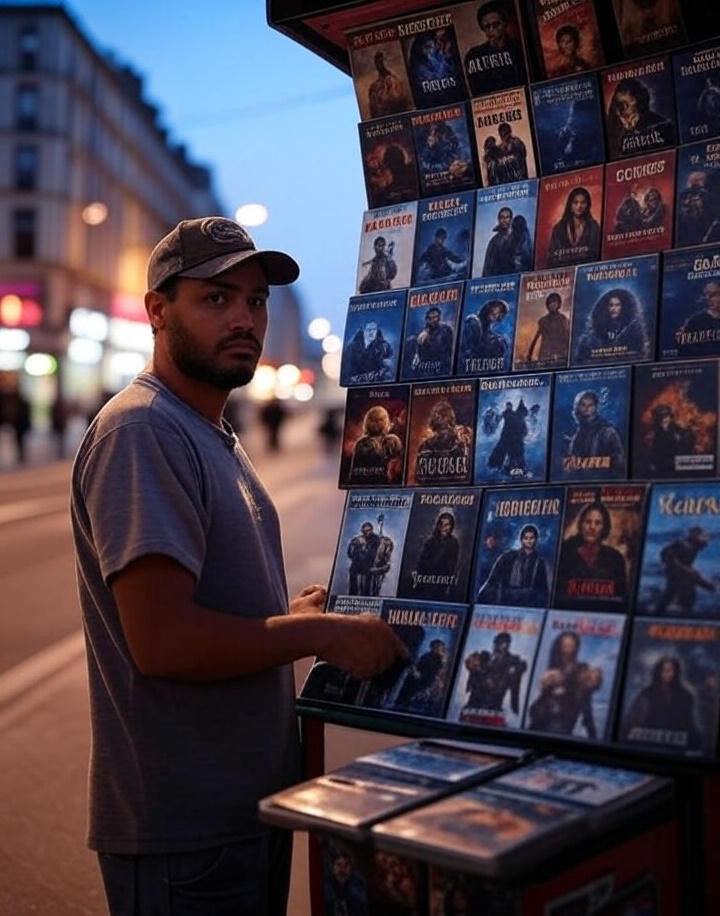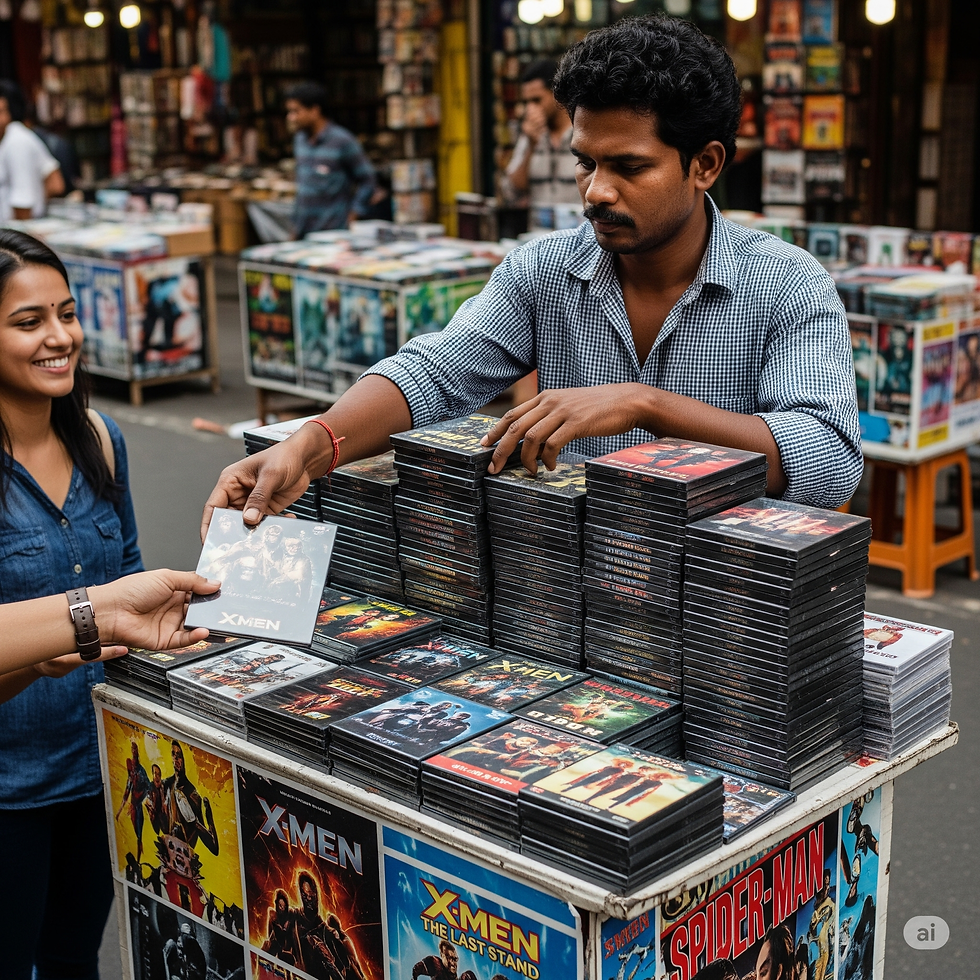Piracy is Back: What Does This Mean for Indie Filmmakers?
- Edoardo Ceron
- Jul 27
- 6 min read
Updated: Aug 17

The Return of the Digital Pirates
Streaming was supposed to be piracy's death. When Netflix burst onto the scene with its $7.99 all-you-can-eat model, torrents seemed destined for digital extinction. Fast-forward to 2025, and piracy is roaring back with a vengeance. The culprit? The very streaming wars that were meant to give us endless choice have instead created endless bills.
Today, watching just three popular shows—Succession on HBO Max, Yellowstone on Paramount+, and Barbarians on Netflix—requires juggling subscriptions totaling $42.98 per month (HBO Max at $16.99, Paramount+ at $7.99, and Netflix Standard at $17.99). That's $515.76 annually just for three shows across three platforms.
As a filmmaker who's navigated both indie production and global distribution, I see this fragmentation creating a perfect storm. Audiences face an impossible choice: pay upwards of $100 monthly for comprehensive streaming access, or spend "one hour looking for torrents and a few hours downloading them." The math is brutal, and viewers are voting with their bandwidth.
But here's where it gets interesting for indie filmmakers: this crisis isn't just a threat—it's the biggest distribution opportunity we've had since YouTube's early days.
The Streaming Wars: How Choice Became Chaos
Remember the golden age of 2010-2015? Netflix had everything. The Office, Disney classics, HBO originals, indie films—all for less than ten dollars a month. Piracy plummeted because legal streaming was cheaper and more convenient than torrenting.
Then came the land grab. Disney yanked their catalog for Disney+. NBCUniversal pulled The Office for Peacock. WarnerMedia created HBO Max. Paramount launched Paramount+. Each platform hoarded its crown jewels, forcing viewers into subscription roulette.
The result? Americans now spend an average of $42.38 monthly on streaming, with comprehensive coverage pushing past the $100 mark. Meanwhile, bundle deals like Disney+, Hulu, and Max cost $30 monthly without ads—still excluding Netflix, Paramount+, and others.
For viewers, this isn't just expensive—it's exhausting. Who remembers which platform has which show? Who wants to manage eight different subscriptions, each with different billing cycles and cancellation policies?
Enter the modern pirate, armed with the same justification that drives every act of digital rebellion: "I need entertainment, and I also need to save money."

A Brief History of Human Entertainment (And Why We'll Always Find a Way)
This piracy surge isn't really about technology—it's about humanity's oldest impulse. We are storytelling creatures, and we'll go to extraordinary lengths to access the stories we crave.
Consider our journey: 40,000 years ago, humans carved the world's first musical instruments from bird bones and mammoth ivory. Cave paintings at Lascaux told stories in pigment and torchlight. The written word democratized narratives, letting stories travel beyond the storyteller's voice. The printing press made books affordable. Radio brought theater into homes. Television made moving pictures universal.
Each technological leap was accompanied by "piracy" adapting songs without attribution, scribes copying manuscripts, bootleg radio broadcasts, black market DVDs. At every stage, gatekeepers tried to control access, and audiences found ways around them.
Today's digital pirates aren't fundamentally different from medieval villagers sharing folk tales or Depression-era families gathering around borrowed radios. They're humans pursuing an ancient need through modern means, driven by the same economic pressures that have always pushed people to seek free entertainment.
The difference now? The tools are democratized. A teenager in El Salvador can access the same torrent as a college student in Los Angeles, making global piracy as simple as clicking a magnet link.
The Indie Filmmaker's Dilemma: David vs. a Thousand Goliaths
For independent filmmakers, this piracy resurgence presents unique challenges. Unlike Disney or Netflix, we don't have vast catalogs to absorb losses or billion-dollar marketing budgets to drive awareness. When your $40,000 micro-budget film gets torrented, every illegal download represents a significant percentage of your potential revenue.
But here's what the major studios are missing: piracy can be a filmmaker's secret weapon if you approach it strategically.
Consider the mathematics of modern attention. Your indie film competing for eyeballs against Succession, Yellowstone, and Barbarians on traditional platforms is like a street musician competing with a stadium concert. But in the piracy ecosystem? You're all equal. A well-seeded torrent of your film gets the same prominence as a blockbuster.
The key insight: pirates are your most engaged audience. They actively sought out your film, downloaded it, watched it, and even ‘seed’ it [Seed means to Share]. They've invested time and effort—ingredients that convert into loyalty if you play your cards right.
Fighting Piracy by Embracing It: The Indie Advantage
Here's the contrarian strategy that major studios can't pursue but indie filmmakers absolutely should: make piracy work for you.
The YouTube Shield Strategy
Upload your film to YouTube with strategic ad placement. YouTube monetization can generate $1-5 per 1,000 views, and most pirates would rather watch a legal stream with skippable ads than deal with sketchy torrent sites and malware risks.
Embed your brand directly into the film's opening and closing credits with clear calls-to-action: "Support indie filmmaking at [YourWebsite].com" or "Follow @YourHandle for behind-the-scenes content." When your film gets pirated, these messages travel with it, turning every illegal view into potential fan acquisition.
The Freemium Hook
Release a "Director's Cut" strategy: upload a standard version for free while selling premium versions with commentary tracks, deleted scenes, and behind-the-scenes content. Pirates get the story, but fans get the experience. [Although this could also get pirated]
This isn't just theoretical—it works. Films like Tangerine and The Blair Witch Project leveraged unauthorized distribution to build cult followings that translated into legitimate revenue streams.
The Social Media Saturation Bomb
Flood every platform—TikTok, Instagram, Twitter, Reddit, Discord, LinkedIn, even Snapchat—with bite-sized content. Create 30-second trailer cuts, behind-the-scenes snippets, and "How we made this with no budget" videos.
Join Reddit communities like r/movies, r/filmmaking, and genre-specific subreddits. Participate authentically, then share your work as part of broader discussions. The goal: omnipresence. Make your film impossible to ignore across the digital landscape.
The Unconventional Ad Gambit
Think beyond traditional marketing. Duolingo has 500+ million users learning languages—perfect for foreign language films or stories with international themes. Gaming apps, meditation apps, even recipe apps offer targeted advertising at fraction-of-a-penny costs.
A $500 ad spend across diverse platforms often generates more awareness than a $5,000 traditional marketing campaign because you're reaching audiences in unexpected contexts.
The Economics: Why Small Can Win

Let's break down the math that makes indie films surprisingly anti-fragile in the piracy age.
A $100 million blockbuster needs massive theatrical and streaming revenue to recoup costs. Every pirated copy represents significant lost revenue because the film requires enormous audience reach to break even.
Your $15,000 indie film? You need roughly 300,000 engaged viewers at $0.05 each (through ads, merchandise, or direct support) to double your investment. If 100,000 people pirate your film but 3,000 become genuine fans who support your next project through crowdfunding or direct purchase, you've built a sustainable career foundation.
This is the "1,000 True Fans" model applied to the piracy age: you don't need millions of viewers, you need thousands of supporters. Pirates help you find them.
Global Perspective: Turn Regional Piracy Into Distribution Strategy
Piracy rates vary dramatically by region, with cost being the primary driver. In markets where streaming subscriptions cost 10-20% of average monthly income, piracy becomes a survival tool, not a lifestyle choice.
Smart indie filmmakers can flip this challenge: offer legal, region-appropriate pricing or free access in high-piracy markets while monetizing through advertising or merchandise. A film that's free-to-stream in El Salvador but premium in the US maximizes both reach and revenue.
Multilingual access gives you a massive advantage here—you can create dubbed or subtitled versions tailored to specific markets, then distribute them through region-appropriate channels before pirates fill the void.
The Call to Action: Steal the Show, Not Just the Film
Piracy is back because streaming became expensive and fragmented, but for indie filmmakers, this crisis is a camouflaged opportunity. While major studios fight piracy with lawyers and DRM, you can embrace it with creativity and strategy.
Make your film findable, watchable, and shareable. Build communities around your stories. Turn pirates into patrons by giving them reasons to support your work beyond just watching it.
The studios are fighting a war they can't win against human nature. You don't have to win that war—you just have to make it irrelevant by building something better: direct relationships with audiences who care about your stories.
In 2025, the filmmaker who understands piracy psychology and turns it into a distribution strategy will build the most sustainable career. The question isn't whether people will pirate your film—it's whether you'll be ready to convert those pirates into the foundation of your filmmaking future.


